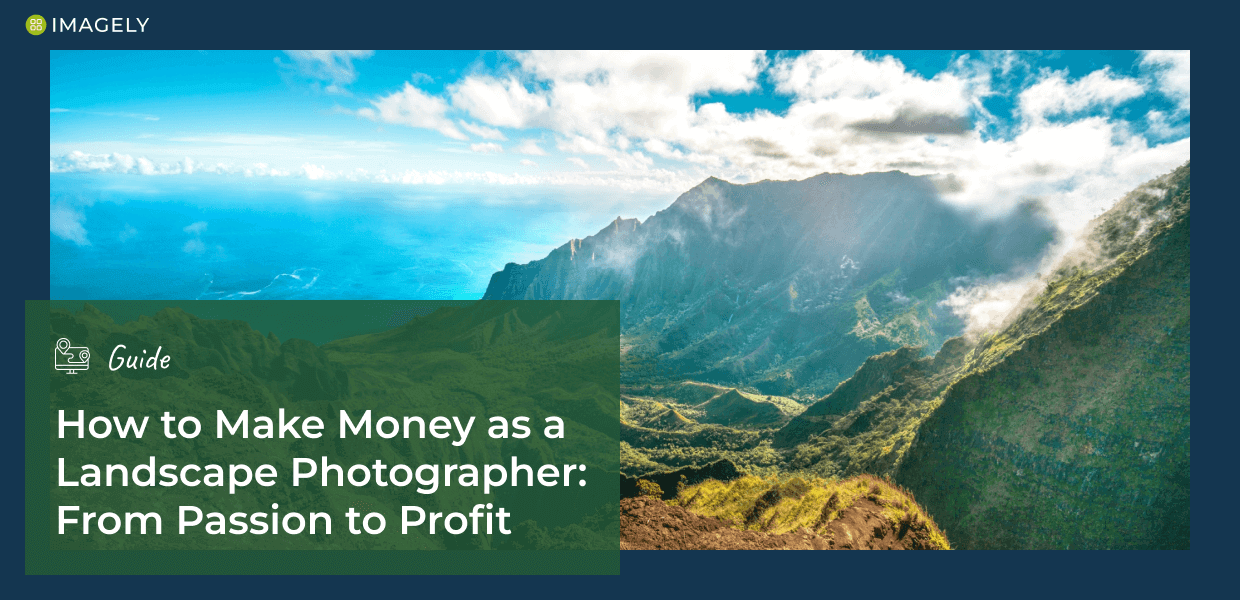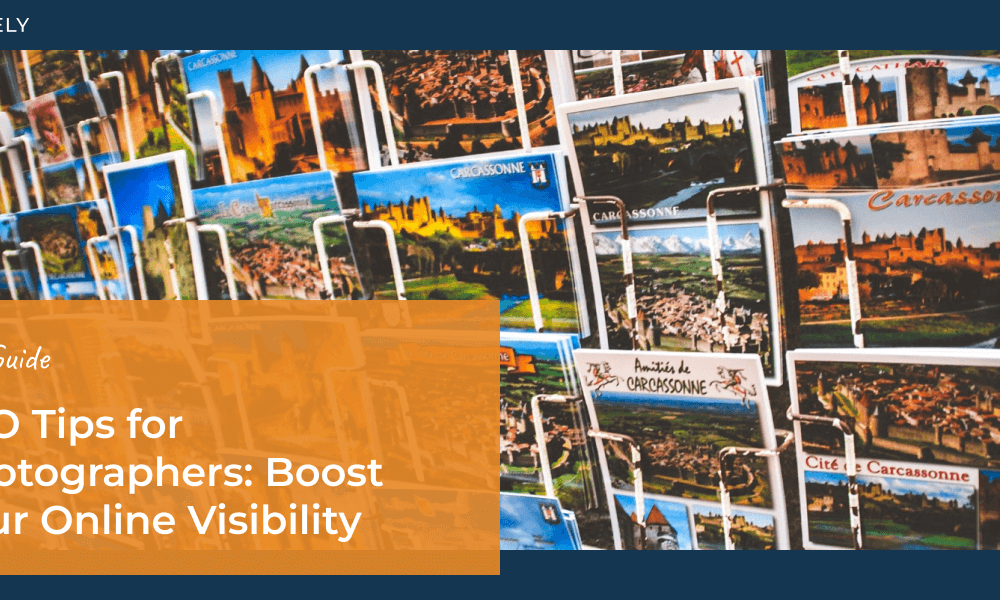The rolling mountains, cascading waterfalls, and lush green expanses - landscapes such as these captivate many photographers. For those of us drawn to capturing nature's beauty, the call of the outdoors is hard to resist.
But whether you're a seasoned pro or just starting out in landscape photography, one burning question likely occupies your mind: Can your passion actually pay the bills? This dilemma holds many creatives back from fully pursuing their craft.
So, if you've been hesitating to grab your gear and head out into the wild, this comprehensive guide will show you some of the best ways to make money as a landscape photographer.
The earth is art, the photographer is only a witness.
Yann Arthus-Bertrand, Noted Environmentalist & Photographer
Understanding the Landscape Photography Market
Before diving into specific strategies, it's important to understand the current landscape photography market. The shift from film to digital dramatically changed the industry:
- Digital cameras and smartphones made landscape photography more accessible
- Lower barriers to entry increased competition
- Online platforms expanded potential reach and sales channels
- Demand remains strong for high-quality landscape imagery
While the market has become more saturated, opportunities still abound for talented and business-savvy landscape photographers. From magazines and social media to fine art prints and stock sites, diverse channels exist to monetize your work.
The key is diversifying your income streams and finding your unique niche. Let's explore the many ways you can turn your landscape photography passion into profit.
How to Sell Landscape Photos and Make Money
1. Sell Your Nature Photos as Fine Art Prints
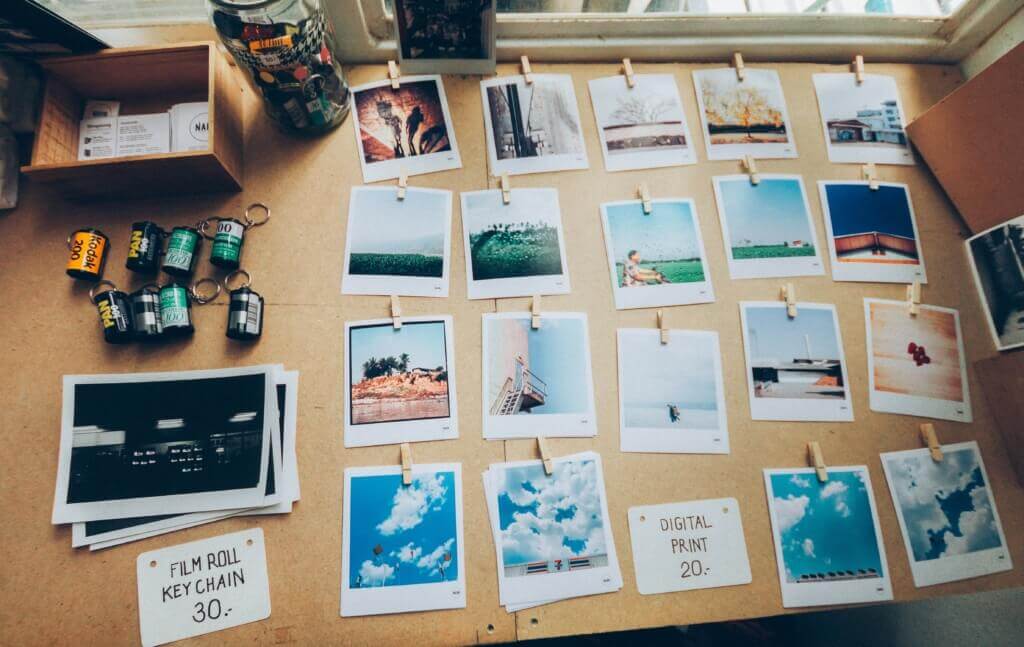
One of the most rewarding ways to make money from landscape photography is selling fine art prints. Not only can this be financially lucrative, but seeing your work displayed in homes and offices is deeply satisfying.
Print-on-Demand Websites
Sites like Pixels, SmugMug, and Zenfolio allow you to upload your images and sell them as prints without handling logistics. Benefits include:
- No upfront costs for printing, framing, or shipping
- Wider audience reach
- Ability to offer various print types (canvas, metal, framed, etc.)
The downside is you'll earn only a portion of each sale and may need to pay subscription fees. Typical earnings can range from 20-30% of the sale price, depending on the platform and product.
Selling Prints Through Your Own Website
For more control and higher profit margins, sell prints directly through your own website. This approach offers:
- Full control over pricing and presentation
- Higher profit margins (often 60-80% of the sale price)
- Ability to build your brand
However, you'll need to handle printing, shipping, and marketing yourself. This is where a tool like NextGEN Gallery can be invaluable for showcasing and selling your work.
NextGEN Gallery: Your Secret Weapon for Selling Photos
If you're serious about selling landscape photos online, NextGEN Gallery is a game-changer.
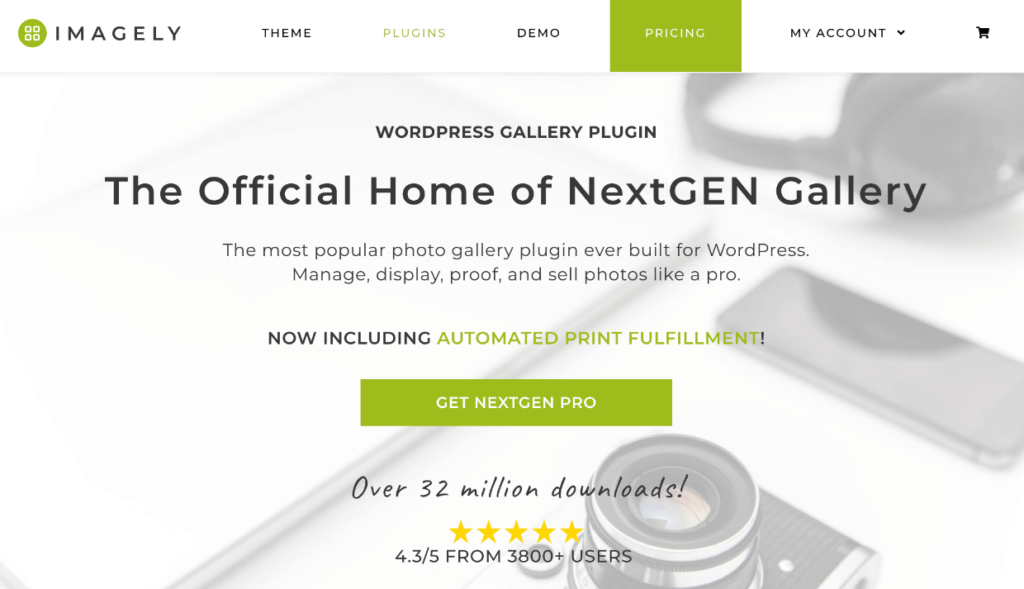
As the most popular WordPress gallery plugin for photographers, NextGEN Gallery makes building beautiful, responsive galleries a snap. But that's just scratching the surface. The plugin provides a built-in eCommerce system, tailor made for photographers and offering automated print fulfillment through integration with leading print labs.
You can showcase your work and sell prints or sell digital downloads right from your WordPress site, and you'll keep 100% of the profit. Customers can easily add items to their cart and purchase your photography. Then, any prints will be automatically processed, packed, and shipped.
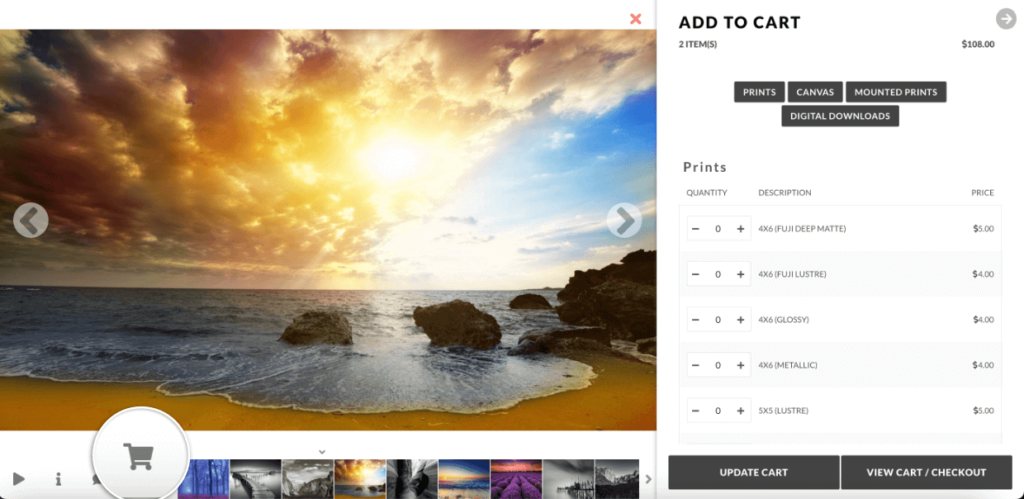
The beauty of this system is that you get all the benefits of hassle-free print-on-demand without paying any fees or subscriptions. Plus, NextGEN Gallery provides a whole host of other features to streamline your entire landscape photography business, such as:
- Client proofing
- Adobe Lightroom integration
- Deeplinking for better SEO
- Image protection and watermarking
- Social sharing and image commenting
- Image optimization with automatic resizing and lazy loading
- Gallery animations and hover captions
- And lots more!
With NextGEN Gallery, you can create a professional online store for your landscape prints without any coding knowledge. It's the easiest way to start selling your photos directly to buyers while maintaining full control over your business.
Get started with NextGEN Gallery today and turn your website into a powerful sales tool for your landscape photography.
2. License Your Photos as Stock Images
Selling your landscape photos as stock images can provide a steady stream of passive income. Popular stock sites include:
- Shutterstock
- Adobe Stock
- Getty Images
- Alamy
- 500px
While individual sales may yield lower returns than fine art prints, the cumulative earnings from multiple image licenses can add up. The key here is to think about volume:
- Study market trends and in-demand subjects
- Provide high-quality, technically perfect images
- Use relevant keywords and descriptions
- Consistently upload new content
- Consider offering exclusive rights for higher payouts
Remember, you can often sell the same image on multiple stock sites to maximize your reach and earnings. Earnings can vary widely, but successful stock photographers can make anywhere from a few hundred to several thousand dollars per month.
3. Pitch to Publications: From Travel Magazines to Niche Outlets
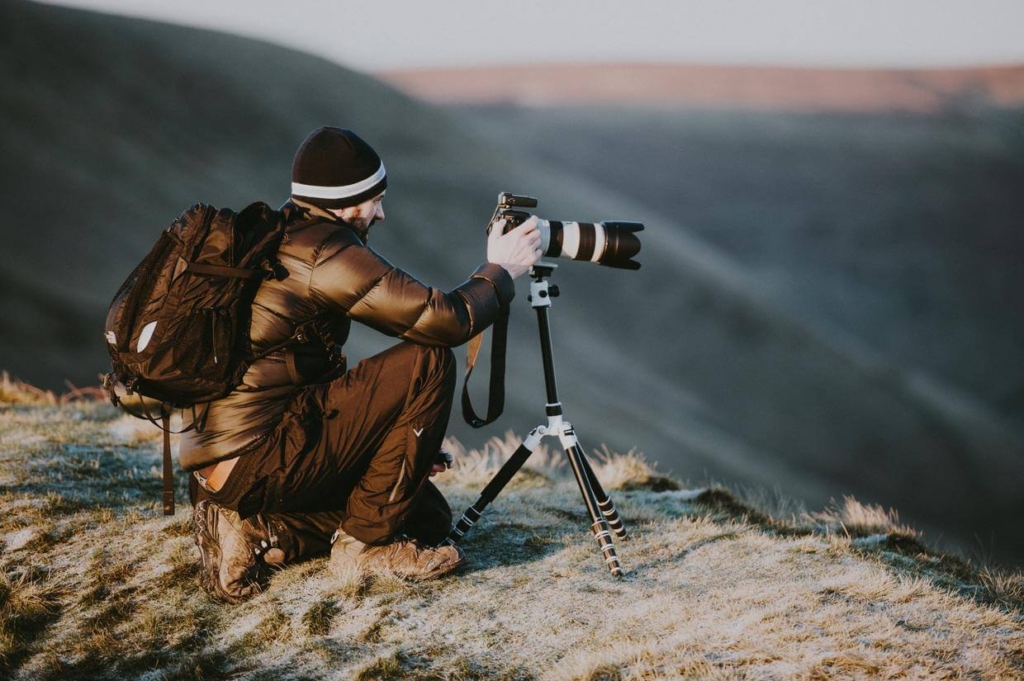
A wide range of publications are constantly in need of high-quality landscape imagery. While breaking into this market can be challenging, the rewards are often well worth it:
- Higher pay per image compared to stock sites (often $250-$1000+ per image)
- Exposure and prestige
- Potential for ongoing relationships with publishers
- Opportunities for commissioned work and travel assignments
Target publications can include:
- Travel magazines and websites (e.g., National Geographic, Lonely Planet, Travel + Leisure)
- Local and regional newspapers
- Nature and wildlife magazines
- Environmental organizations' publications
- Outdoor and adventure sports magazines
- In-flight magazines
- Lifestyle and home decor publications
Pro Tip: Don't overlook smaller, niche publications. While they might pay less per image, they often have less competition and can provide valuable portfolio pieces and industry connections.
To increase your chances of success:
- Research publications thoroughly to understand their style, needs, and submission guidelines
- Develop a strong, diverse portfolio focused on your target publications
- Craft compelling pitch emails with your best relevant work
- Consider local angles or unique perspectives on popular locations
- Be persistent and don't get discouraged by rejections
- Build relationships with editors for potential regular assignments
When pitching, remember that many publications need more than just pretty pictures. Consider how your images can complement or illustrate specific stories or themes. For instance:
- Seasonal changes in a popular tourist destination
- The impact of climate change on local landscapes
- Hidden gems in well-known national parks
- Urban landscapes and the intersection of nature and city life
Rates can vary widely, from $50-$500 per image for smaller or local publications to $1000+ for major magazines. Building ongoing relationships with editors can lead to more stable, higher-paying work over time.
Remember, success in this area often comes down to persistence and professionalism. Keep refining your pitches, expanding your network, and improving your craft, and you'll increase your chances of breaking into this area of landscape photography.
4. Sell to Local Businesses and Tourism Boards

Before aiming for national or international sales, you can also look for opportunities in your own backyard. Local businesses and regional tourism organizations often need high-quality landscape images for:
- Websites and social media
- Brochures and marketing materials
- Office decor
- Postcards and souvenirs
- Billboards and outdoor advertising
Build relationships with:
- Hotels and resorts
- Restaurants and cafes
- Real estate agencies
- Visitor centers
- Chambers of commerce
- Regional tourism boards
- Local government offices
- Outdoor recreation companies
Selling locally allows you to leverage your knowledge of the area and build a reputation as the go-to photographer for regional landscape imagery. Prices can vary, but local businesses often pay $100-$500 per image, with potential for larger projects running into thousands of dollars.
5. Create and Sell Educational Content

As you gain experience and expertise in landscape photography, you can monetize your knowledge through educational content:
Online Courses
If you have a WordPress site, plugins like MemberPress and Thrive Apprentice make it very simple to set up and sell eLearning courses on your website. Alternatively, platforms like Udemy, Skillshare, and CreativeLive allow you to create and sell video courses on their platform. Popular topics include:
- Nature photography for beginners
- Mastering composition in landscape photography
- Post-processing techniques for landscape images
- Night sky and astrophotography
- Advanced techniques like focus stacking and panoramas
Online courses can be a significant source of income, with successful instructors earning thousands of dollars per month from course sales.
eBooks and Guides
Self-publish detailed guides on various aspects of landscape photography. These can be sold through your website, Amazon Kindle, or other platforms. Topics might include:
- Location guides for popular landscape photography destinations
- Gear guides for landscape photographers
- Post-processing workflows for landscape images
- Building a landscape photography business
YouTube Channel
Create a YouTube channel focused on landscape photography tips, behind-the-scenes content, and gear reviews. Once you build an audience, you can monetize through:
- Ad revenue
- Sponsorships and brand deals
- Affiliate marketing
- Promoting your own products (courses, ebooks, prints)
While building a successful YouTube channel takes time, top photography channels can earn thousands of dollars per month!
6. Lead Photography Workshops and Tours
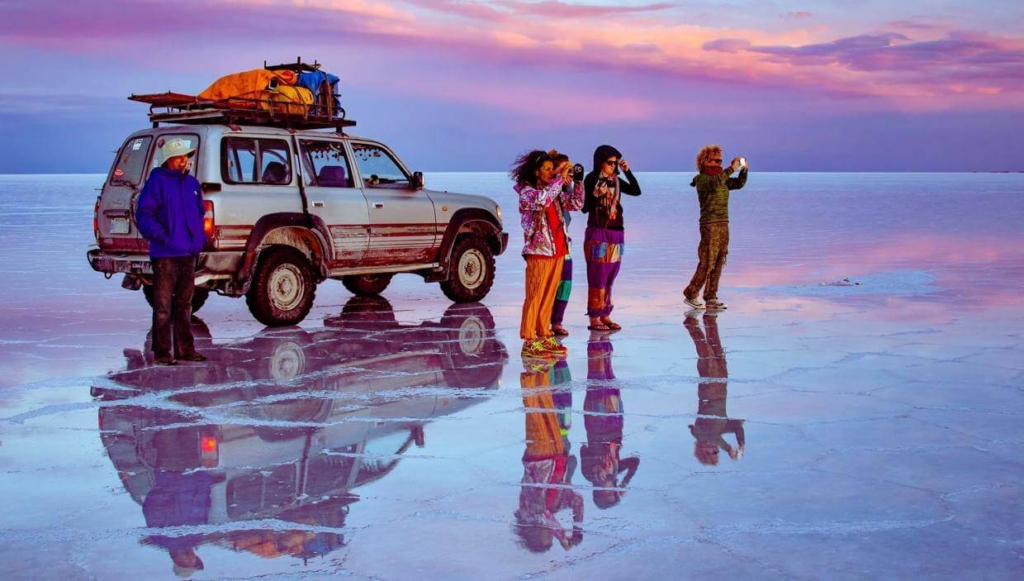
Combine your love for landscapes with teaching by offering photography workshops and tours. This can be highly rewarding both financially and personally. Options include:
- Single-day local workshops ($100-$300 per person)
- Weekend intensives in nearby locations ($500-$1000 per person)
- Week-long photo tours to iconic landscapes ($2000-$5000 per person)
- International photography expeditions ($5000+ per person)
To succeed with workshops and tours:
- Start small and local to build your reputation
- Partner with other photographers or tour operators to share expertise and costs
- Provide exceptional value through in-depth instruction and unique locations
- Market your events through your website, social media, and photography clubs
- Consider offering specialized workshops (e.g., night photography, drone landscapes)
Pro Tip: Use NextGEN Gallery to showcase stunning images from past workshops, creating desire in potential students to capture similar shots under your guidance.
7. Monetize Your Instagram Following
While not a direct sale of your photos, a strong Instagram presence can lead to various income opportunities:
- Sponsored posts featuring gear or travel destinations ($100-$1000+ per post)
- Brand ambassadorships (free gear, paid promotions)
- Affiliate marketing for photography equipment
- Promoting your prints, courses, or workshops
- Licensing opportunities from brands discovering your work
To grow your Instagram following:
- Post consistently with your best work
- Use relevant hashtags to increase discoverability
- Engage with your audience and other photographers
- Share the stories behind your images
- Utilize Instagram features like Reels and Stories
Remember, building a significant following takes time and consistent effort, but can pay off with diverse income streams.
Tips for Success & Overcoming Challenges as a Professional Landscape Photographer
To maximize your earning potential, build a sustainable career, and overcome common obstacles, keep these tips in mind:
1. Develop Your Craft & Brand
Continuously improve your technical skills and artistic vision. Stay updated with the latest photography techniques and post-processing tools. The better your work, the more valuable it becomes. Consider investing in advanced equipment (full-frame cameras, high-quality lenses, filters), post-processing software (Adobe Lightroom, Photoshop, specialized tools), and field techniques (long exposures, focus stacking, panoramas).
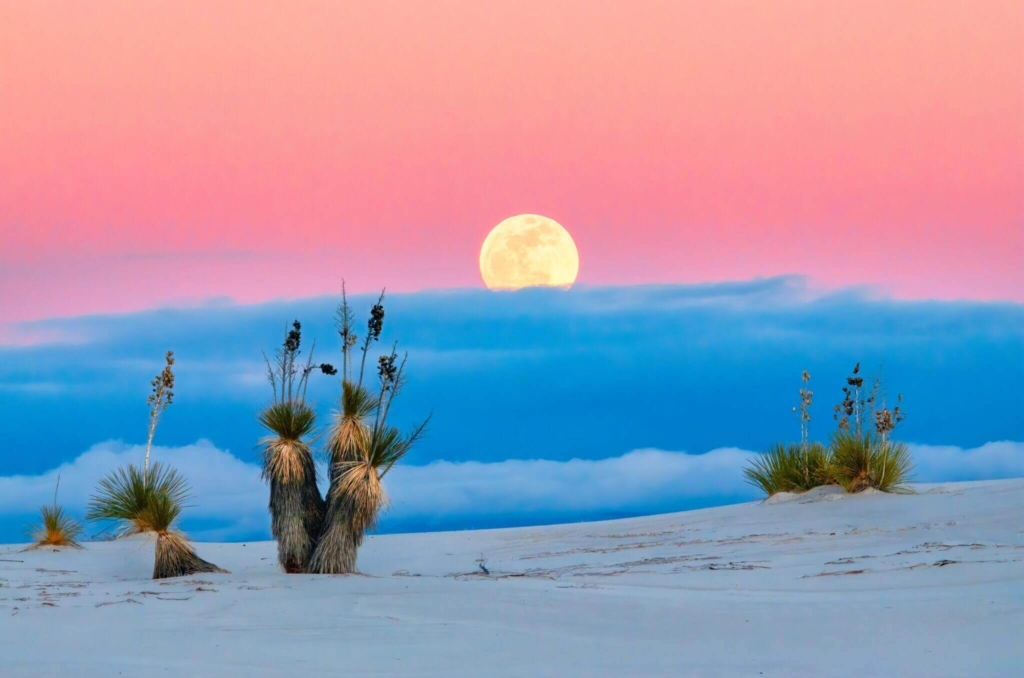
Develop a consistent brand identity across your website, social media, and marketing materials. Your unique style and vision should be immediately recognizable. This includes a professional logo and color scheme, consistent editing style across your images, a compelling artist statement or bio, and regular communication with your audience through blogs or newsletters.
2. Build a Strong Portfolio
Your portfolio is your most important marketing tool. Regularly update it with your best work, organized in a way that showcases your unique style and diverse skills. Consider creating themed portfolios for different subjects (e.g., mountains, seascapes, forests) or styles (e.g., minimalist, dramatic, ethereal).
3. Navigate Weather and Travel Challenges
Landscape photography often relies on good weather conditions, but Mother Nature doesn't always cooperate. To mitigate this challenge, plan your shoots around weather forecasts while remaining flexible. Learn to work with various conditions – stormy skies can create dramatic images that stand out from typical sunny-day shots.
Always have a backup plan, such as indoor locations or different compositions that work well in overcast conditions. Use challenging weather as an opportunity to capture unique, moody shots that can set your portfolio apart.

Along with weather considerations, managing travel costs is crucial for landscape photographers. Start by thoroughly exploring and photographing your local area – you might be surprised by the hidden gems you find. When traveling further afield, combine personal trips with photography opportunities to maximize your time and budget.
As your landscape photography business grows, consider partnering with travel companies or tourism boards for sponsored trips, which can provide access to locations while offsetting costs. Plan multi-location shoots to get the most out of each journey. By being strategic about your travel and adaptable to weather conditions, you can create stunning images while keeping your business financially sustainable.
4. Network and Collaborate
Build relationships with other photographers, industry professionals, and potential clients. Attend photography events, join online communities, and seek collaborative projects. Networking can lead to referrals for client work, collaborative workshops or photo tours, and opportunities for group exhibitions, as well as valuable mentorship, advice, and support.
5. Master the Business Side
Invest time in learning about pricing, licensing, contracts, and taxes. Consider working with an accountant or business advisor to ensure you're operating efficiently and legally. Key areas to focus on include pricing strategies, copyright law and licensing agreements, business structure (sole proprietorship, LLC, etc.), tax deductions for photography-related expenses, and insurance for your equipment and business.
6. Market Consistently
To succeed as a landscape photographer, consistent marketing is crucial. Regularly promote your work through multiple channels including your website, social media platforms, email newsletters, and in-person networking events. These consistent efforts often lead to increased opportunities and sales.
Consider maintaining an active blog on your website where you can share photography tips and behind-the-scenes content, which helps establish your expertise and connects you with your audience. Don't overlook the potential of photography contests - submitting your work can lead to additional exposure and accolades.
7. Stand Out in a Crowded Market
In the competitive field of landscape photography, finding ways to differentiate yourself is essential. Start by developing a unique style or niche - this could be anything from minimalist landscapes to abstract or detailed nature photos.
Aim to tell stories with your images, going beyond merely capturing pretty scenes to conveying emotion or narrative. Don't be afraid to incorporate elements like people or wildlife into your landscapes.
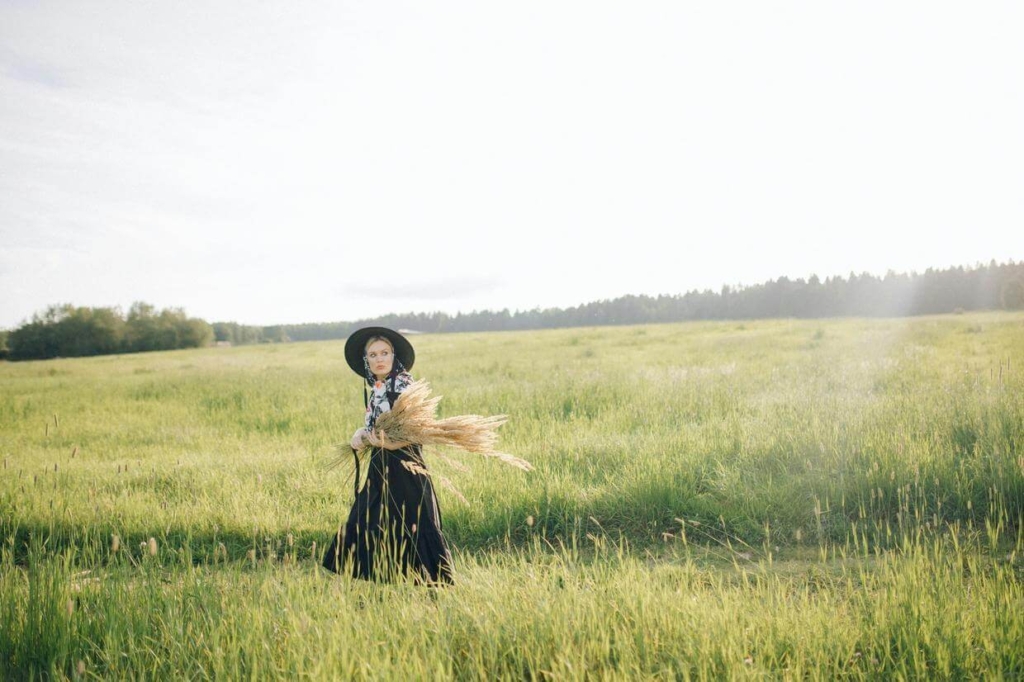
Continuously challenge yourself creatively and technically, always striving to improve and innovate. Consider focusing on less-photographed locations or finding fresh perspectives on popular spots to offer viewers something they haven't seen before.
Remember, standing out often means taking risks and pushing boundaries - embrace this challenge as an opportunity to grow as an artist and establish your unique voice in the landscape photography world.
By implementing these strategies and continuously refining your approach, you can overcome common challenges and build a successful career as a landscape photographer. Remember, perseverance and adaptability are key in this competitive field. Stay passionate about your craft, but also approach it as a business to ensure long-term success.
Combining Income Streams for Maximum Profit
The most successful landscape photographers often combine multiple income streams. Here's an example of how you might structure your business:
- Core Income: Fine art print sales through your website using NextGEN Gallery (40% of income)
- Passive Income: Stock photo licensing on multiple platforms (20% of income)
- Active Income: Seasonal photography workshops and tours (25% of income)
- Supplemental Income: Freelance work for regional publications and tourism boards (10% of income)
- Marketing Channel: Instagram with occasional sponsored posts (5% of income)
- Long-term Investment: Building an educational YouTube channel and online course
By diversifying in this way, you create multiple touchpoints for potential customers and insulate yourself from fluctuations in any single market.
The Future of Landscape Photography
As technology evolves and consumer preferences change, staying ahead of trends is crucial. Here are some developments to watch in landscape photography:
- Drone Photography: Aerial landscape photography is becoming increasingly popular. Consider adding drone skills to your repertoire to offer unique perspectives.
- Virtual Reality and 360-Degree Images: Immersive technologies are all the rage. Learning to create VR-ready landscapes could open new markets.
- Conservation and Environmental Storytelling: As environmental concerns grow, there's increasing demand for landscape photography that tells important conservation stories.
- Mobile Photography: While traditional cameras still dominate the professional arena, the quality of smartphone cameras is continually improving. Don't dismiss mobile photography as a potential tool in your kit.
Wow that was a lot, but you made it to the end! Hopefully by now you have a better idea of where to sell your photos of nature and landscapes.
Remember, success doesn't happen overnight. Be patient, persistent, and always strive to improve both your craft and your business skills. With a little time and and a sprinkle of luck you could be making money as a landscape photographer sooner than you think!
Ready to get serious about your landscape photography business? Get started with NextGEN Gallery today!
If you liked this article, be sure to check out our Beginner’s Lightroom Workflow Tutorial: Work Smarter, Not Harder.
For more photography tips and WordPress tutorials, check out our blog.

